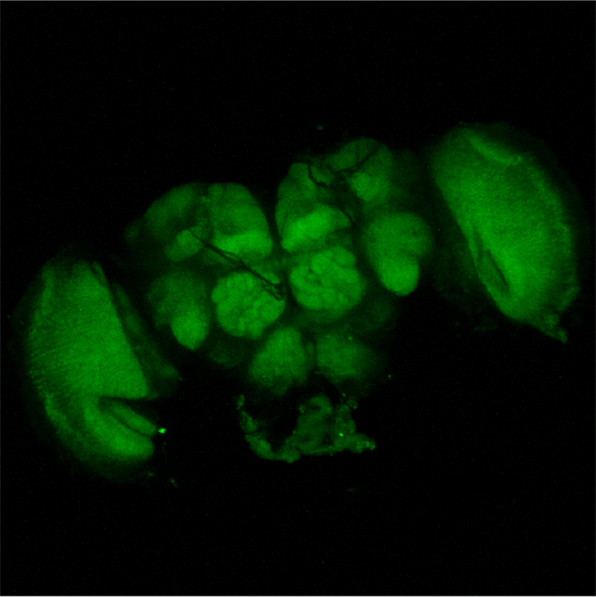Using light-emitting corals, fruit flies and powerful microscopy, QBI researchers are working to better understand the effects of general anaesthesia on the brain.
The research will ultimately enable better understanding of patient recovery; overcome side effects such as nausea; and pave the way for developing of safer anaesthetics, especially for older people and those with Parkinson’s and Alzheimer’s disease.
- General anaesthetics do more than put you to sleep
- How the jellyfish revolutionised brain science
- What is Alzheimer's disease?
Using fluorescence found in brain coral

Individual protein behaviour has been observed in intact brain tissue in the QBI laboratories, explaining precise mechanisms underpinning general anaesthesia.
Surgery is the most common medical procedure, involving up to 400 million people a year globally, with different forms of anaesthesia involved in the majority of cases.
Professor Bruno van Swinderen and PhD candidate Adam Hines are using a fluorescent molecule called Eos, originally found in lobed brain coral, to pinpoint proteins targeted by anaesthetics.
Understanding communication in the brain
One of the proteins, syntaxin1A, is involved in neurotransmission – chemical communication between cells that enable the brain to process information.
General anaesthesia reduces neurotransmission and prevents painful stimuli from being processed – and pain being consciously perceived.
Mr Hines said syntaxin1A was found in the brains of all animals, to enable neurotransmission, meaning the research was relevant to understanding processes in the human brain.
Tracking proteins in fruit fly brains

His research used the intact brains of a fruit fly because he could visualise effects on protein behaviour throughout the entire brain with sophisticated microscopy, he said.
Using Eos for the research was a game-changer, engineering the molecule to label syntaxin1A and light up as it tracks the protein’s movement and function, he said.
“Eos has a rather surprising feature: it can change colour. This lets us observe the movement of proteins within living cells — something that was previously impossible.
“Imagine you have a Christmas tree covered with lights but they are all the same colour; the tree might appear a bit blurry from afar. If one of the lights is switched to a different colour, you’d spot it easily.
“The same principles apply when researchers try to track moving proteins in cells. Proteins perform multiple vital tasks for a cell and tracking them can help us understand their function, but they’re usually too small to see with regular microscopes.
“Using the Eos molecule, we can develop super-resolution microscopes that reveal even the smallest elements within cells, including proteins.”
Anaesthesia without side-effects

General anaesthesia can take many forms, delivered as a cocktail of intravenous or inhaled medicines, but probably share a common mechanism.
It includes a sedative compound that exploits the brain’s natural ability to induce sleep as well as agents to prevent muscle movement and feel pain.
Anaesthesia is considered risky for people with Parkinson’s and Alzheimer’s disease because it is sometimes associated with negative post-operative outcomes and potentially with disease progression.
A better understanding of effects on neurotransmission in intact brain tissue should lead to better anaesthetics tailored to individual patient needs.
The research has been published in eNeuro.
.



